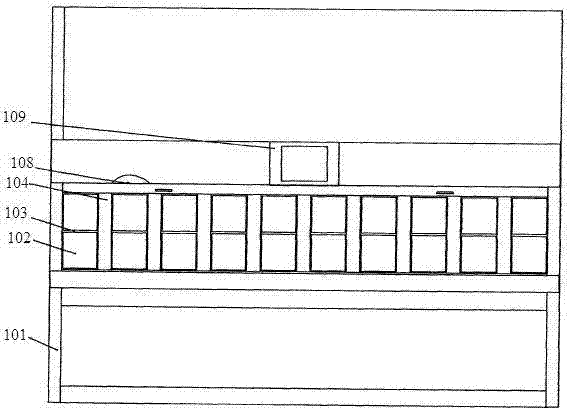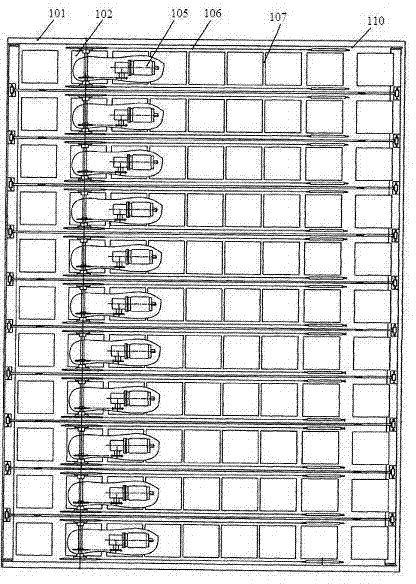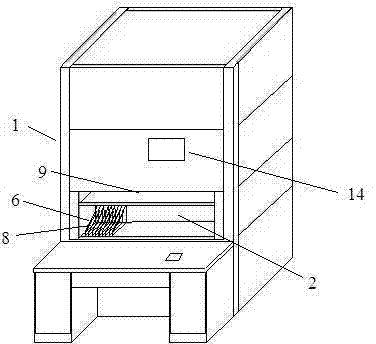Management method for positioning archival data to books and device for realizing method
A management method and file technology, applied in storage devices, transportation and packaging, etc., can solve problems such as inability to accurately locate the file, spending a lot of time searching, and inconvenient access to files.
- Summary
- Abstract
- Description
- Claims
- Application Information
AI Technical Summary
Problems solved by technology
Method used
Image
Examples
Embodiment Construction
[0034] In order to better understand the improvement made by the present invention compared with the prior art, before describing the two specific implementation modes of the present invention in detail, the prior art mentioned in the background art section will be described with reference to the accompanying drawings.
[0035] figure 1 and figure 2 They are respectively a structural schematic diagram and a cross-sectional view of the multi-unit rotary warehouse disclosed in the prior art Chinese invention patent CN102058279B.
[0036] In the revolving warehouse, the storage box buckets 102 are made into the required size according to the storage requirements of the articles, and then N storage box buckets 102 are linked by a chain transmission mechanism 106 to form a rotary unit 107, which is powered by a driving motor 105 Driven, the rotary library 101 can combine N rotary units 107 and be controlled by a set of control system 109 . The multi-unit carousel is equipped...
PUM
 Login to View More
Login to View More Abstract
Description
Claims
Application Information
 Login to View More
Login to View More - R&D
- Intellectual Property
- Life Sciences
- Materials
- Tech Scout
- Unparalleled Data Quality
- Higher Quality Content
- 60% Fewer Hallucinations
Browse by: Latest US Patents, China's latest patents, Technical Efficacy Thesaurus, Application Domain, Technology Topic, Popular Technical Reports.
© 2025 PatSnap. All rights reserved.Legal|Privacy policy|Modern Slavery Act Transparency Statement|Sitemap|About US| Contact US: help@patsnap.com



